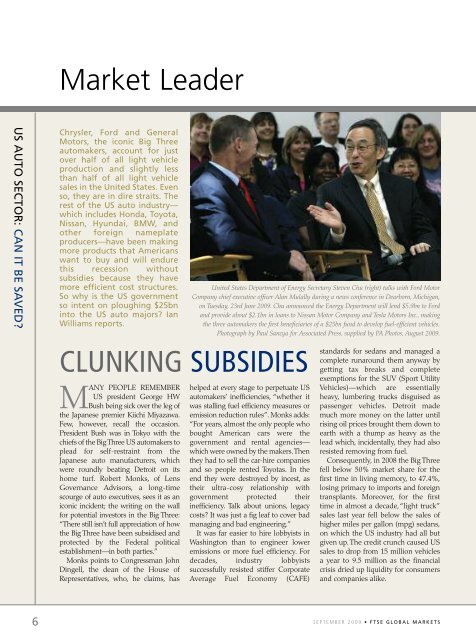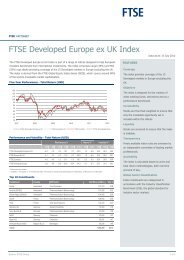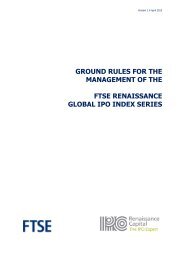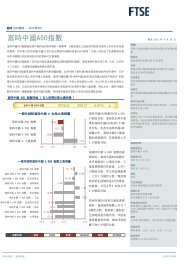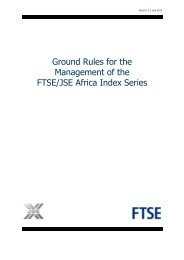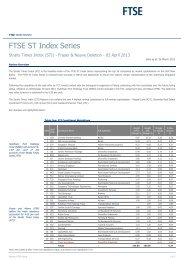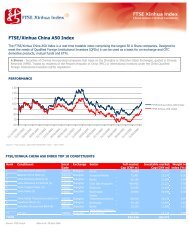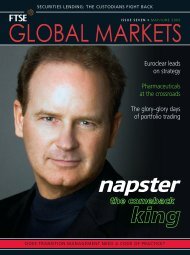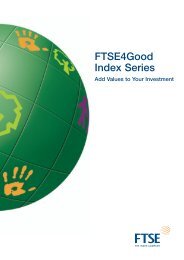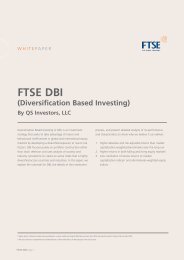You also want an ePaper? Increase the reach of your titles
YUMPU automatically turns print PDFs into web optimized ePapers that Google loves.
US AUTO SECTOR: CAN IT BE SAVED?<br />
6<br />
Market Leader<br />
Chrysler, Ford and General<br />
Motors, the iconic Big Three<br />
automakers, account for just<br />
over half of all light vehicle<br />
production and slightly less<br />
than half of all light vehicle<br />
sales in the United States. Even<br />
so, they are in dire straits. The<br />
rest of the US auto industry—<br />
which includes Honda, Toyota,<br />
Nissan, Hyundai, BMW, and<br />
other foreign nameplate<br />
producers—have been making<br />
more products that Americans<br />
want to buy and will endure<br />
this recession without<br />
subsidies because they have<br />
more efficient cost structures.<br />
So why is the US government<br />
so intent on ploughing $25bn<br />
into the US auto majors? Ian<br />
Williams reports.<br />
CLUNKING SUBSIDIES<br />
MANY PEOPLE REMEMBER<br />
US president George HW<br />
Bush being sick over the leg of<br />
the Japanese premier Kiichi Miyazawa.<br />
Few, however, recall the occasion.<br />
President Bush was in Tokyo with the<br />
chiefs of the BigThree US automakers to<br />
plead for self-restraint from the<br />
Japanese auto manufacturers, which<br />
were roundly beating Detroit on its<br />
home turf. Robert Monks, of Lens<br />
Governance Advisors, a long-time<br />
scourge of auto executives, sees it as an<br />
iconic incident; the writing on the wall<br />
for potential investors in the Big Three:<br />
“There still isn’t full appreciation of how<br />
the Big Three have been subsidised and<br />
protected by the Federal political<br />
establishment—in both parties.”<br />
Monks points to Congressman John<br />
Dingell, the dean of the House of<br />
Representatives, who, he claims, has<br />
United States Department of Energy Secretary Steven Chu (right) talks with Ford Motor<br />
Company chief executive officer Alan Mulally during a news conference in Dearborn, Michigan,<br />
on Tuesday, 23rd June 2009. Chu announced the Energy Department will lend $5.9bn to Ford<br />
and provide about $2.1bn in loans to Nissan Motor Company and Tesla Motors Inc., making<br />
the three automakers the first beneficiaries of a $25bn fund to develop fuel-efficient vehicles.<br />
Photograph by Paul Sancya for Associated Press, supplied by PA Photos, August 2009.<br />
helped at every stage to perpetuate US<br />
automakers’ inefficiencies, “whether it<br />
was stalling fuel efficiency measures or<br />
emission reduction rules”. Monks adds:<br />
“For years, almost the only people who<br />
bought American cars were the<br />
government and rental agencies—<br />
which were owned by the makers.Then<br />
they had to sell the car-hire companies<br />
and so people rented Toyotas. In the<br />
end they were destroyed by incest, as<br />
their ultra-cosy relationship with<br />
government protected their<br />
inefficiency. Talk about unions, legacy<br />
costs? It was just a fig leaf to cover bad<br />
managing and bad engineering.”<br />
It was far easier to hire lobbyists in<br />
Washington than to engineer lower<br />
emissions or more fuel efficiency. For<br />
decades, industry lobbyists<br />
successfully resisted stiffer Corporate<br />
Average Fuel Economy (CAFE)<br />
standards for sedans and managed a<br />
complete runaround them anyway by<br />
getting tax breaks and complete<br />
exemptions for the SUV (Sport Utility<br />
Vehicles)—which are essentially<br />
heavy, lumbering trucks disguised as<br />
passenger vehicles. Detroit made<br />
much more money on the latter until<br />
rising oil prices brought them down to<br />
earth with a thump as heavy as the<br />
lead which, incidentally, they had also<br />
resisted removing from fuel.<br />
Consequently, in 2008 the Big Three<br />
fell below 50% market share for the<br />
first time in living memory, to 47.4%,<br />
losing primacy to imports and foreign<br />
transplants. Moreover, for the first<br />
time in almost a decade,“light truck”<br />
sales last year fell below the sales of<br />
higher miles per gallon (mpg) sedans,<br />
on which the US industry had all but<br />
given up. The credit crunch caused US<br />
sales to drop from 15 million vehicles<br />
a year to 9.5 million as the financial<br />
crisis dried up liquidity for consumers<br />
and companies alike.<br />
S E P T E M B E R 2 0 0 9 • F T S E G L O B A L M A R K E T S


